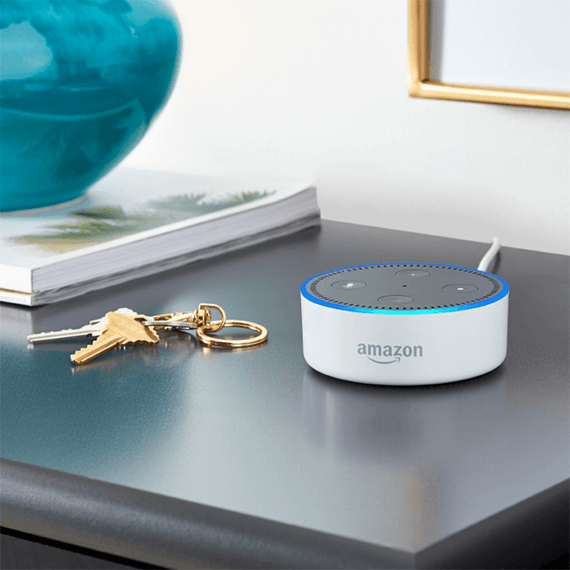How should your business optimize for voice search? The answer may be that the search engine optimization community doesn’t really know yet.
In fact, perhaps the best thing your marketing department can do is focus on compelling content and let search engines figure out how to discover it.
Unfortunately, just waiting for Google or Bing to find your business is not a very satisfying answer.
Search engine optimizers are doers. They build well-structured pages to make content easy for search engine bots to crawl and capture. They research keywords to discover the language their target audience uses. They test and measure traffic, rankings, backlinks, and similar to continuously improve results.
So when optimization professionals see a massive shift in customer behavior, like the migration to voice search, there is a feeling that something must be done. The question, then, is what?
As of December 2017, there is not a lot of certainty around what structures or content would optimize a page for a voice search. It may be the case that voice search optimization is not a lot different than text search optimization.
The challenge then for businesses is discovering what we do know about voice search and reasoning toward possible optimization strategies.
It can be argued that marketers know with some certainty that the number of voice searches will eventually exceed text searches; that voice search is more conversational than text search; that a significant percentage of voice searches are local searches; and that voice search sometimes delivers results that are different than a text-based search engine results page.
More Voice Searches
Looking first at the trend toward voice search, there are, perhaps, two factors that could be driving the growth and popularity of voice-based internet searches.
First, there is the availability of voice-enabled, internet-connected devices.
Just about every mobile phone, tablet, modern laptop, or desktop computer, and an array of internet-of-things devices and smart speakers, like Google Home or Amazon Echo, are now voice-enabled and readily accessible. So it follows that as more devices capable of voice search become available, so too will the number of voice searches.

The Amazon Echo Dot, which costs roughly $30, is an example of one of the many voice-enabled, internet-connected devices.
Second, there is the ease of using a voice search.
The spoken word can be quite fast. For example, an English-speaking adult can typically type about 40 words per minute. But the same English-speaking adult can speak around 150 words per minute.
It is also relatively easier to simply say, “Hey Google…” to a virtual assistant than it is to open a laptop, then a web browser, and finally type in a query.
In short, voice search queries will outnumber text-based search queries within the next few years. What’s more, the total number of search queries will also increase.
Conversational
Text-based search queries tend to use individual words or short phrases, which just about everyone in the search optimization industry calls “keywords.”
Keywords often describe a searcher’s intent as succinctly as possible. The language in a text keyword phrase may also be relatively choppier, since the user may leave out connecting words or ignore normal sentence structure. Thus, you get keyword phrases like “best running shoe 2017.”
Voice-based search queries, in contrast to text searches, are more conversational. These queries include many more words and may often take the form of a question. “What are the best new running shoes in 2017?” or “What is the best new running shoe for a 110-pound, 17-year-old girl?”
Some SEO experts have suggested that this language difference between voice search and text search should lead marketers to amend their target keywords and phrases, adding many more questions and longer sentences.
At least a few optimizers have recommended recording customer service phone calls and mining the recordings for questions or conversational descriptions of products to use as keyword phrases.
But will that help? If Google, Amazon, Apple, and Microsoft, as examples, are actually getting good at natural language recognition, won’t they realize that “best running shoe 2017” and “What are the best new running shoes in 2017?” are fundamentally the same?
Local Searches
Often, folks use voice search to find businesses or products nearby. This is particularly true for restaurants and physical stores. For example, have you ever instructed Siri or Google to “show coffee shops near me.”
Depending on which survey or expert you accept, local searches represent somewhere between 20 percent of 30 percent of all voice search queries. But again, this may not require a change in how your business optimizes for local search. If you are doing the right things, if you will, for text search, you may already be doing the proper things for voice search.
Top 10 Not Enough
While there are many times when a voice search will result in a list of available resources, just like a text-based search, some voice results are, perhaps, best when they provide a single answer.
For example, say a Christmas shopper asked Google Home, “How do I choose the right longboard for my nephew?” What would be a better result, a single YouTube video describing how to pick a longboard or a list of ten links to articles and videos describing how to pick a longboard?
For many, the single video, or even a list of steps that Google Home could read back, would be the better response. This idea that a single answer may be best could mean that for some searches being a top ten result of Google won’t be good enough to be noticed. Put another way, marketers know that voice search results may be presented differently than text search results, which could impact SEO.
In the end, what marketers know now about voice search may not yet lead to clearly defined SEO strategies and tactics. But it does help identify differences, to test and discover what works best.
